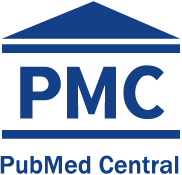Health and working conditions of waste pickers: scoping review
DOI:
https://doi.org/10.17843/rpmesp.2021.384.9294Keywords:
Working Conditions, Health Status, Waste Picker, Solid Waste Segregators, occupational healthAbstract
This scoping review article seeks to describe the health and work conditions of waste pickers worldwide from the working conditions model of the Universidad Nacional de Colombia, through a review of scientific articles published between the years 1999 to 2019. The bibliographic search was carried out manually in PubMed, Taylor and Francis, ScienceDirect, and SAGE. For the article screening process, the Mendeley bibliographic manager was used. The methodological quality was based on a rigorous and serious process respecting the established inclusion and exclusion criteria. 857 records were obtained, of which 88 studies met the inclusion criteria. Most of the studies analyzed had a qualitative approach, based on the application of questionnaires, interviews, surveys, and focus group discussions. The intra-work conditions of the waste picker population are mainly related to situations that affect their work environment, while the non-work conditions that most influence the work performance of waste pickers are associated with their economic and family situation, place of residence, and relationship with the environment. The individual conditions that most affect the health and work of waste pickers are associated with sex, age, and education. From the approach to the working conditions model, this literature review identified and explained the different risk agents and effects on the health of waste pickers around the world as a consequence of their exposure to unsafe and dangerous work environments.Downloads
Download data is not yet available.
Downloads
Published
2021-12-01
Issue
Section
Review
License
Copyright (c) 2021 Revista Peruana de Medicina Experimental y Salud Pública

This work is licensed under a Creative Commons Attribution 4.0 International License.
How to Cite
1.
Escobar-Rincón LP, De Arco-Canoles O del C. Health and working conditions of waste pickers: scoping review. Rev Peru Med Exp Salud Publica [Internet]. 2021 Dec. 1 [cited 2025 Jan. 15];38(4):643-52. Available from: https://rpmesp.ins.gob.pe/index.php/rpmesp/article/view/9294




























